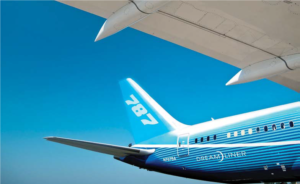Did you know that birds can remain in the air longer than a commercial airliner?
Here are the remarkable facts about the creature that inspired the Wright brothers.
 Image source: Travel 3Sixty
Image source: Travel 3Sixty
The golden plover
According to American researcher Dr Jobe Martin, the golden plover bird – about the size of a pigeon and weighing an average 200g – can fly nonstop from Alaska to Hawaii. The journey entails flying a distance of about 4,800km continuously over a period of four days and three nights, or 88 hours.
The average speed of the golden plover is about 80km/h while an airliner can fly 10 times faster. In July 2018, a Qantas Boeing 787 Dreamliner set a new speed record for a non-stop flight from Perth to London, travelling 14,470km in only 16 hours and 23 minutes.
 Image source: Travel 3Sixty
Image source: Travel 3Sixty
The Boeing 787 Dreamliner is reputedly more fuel efficient than other aircraft
of the same size.
Interestingly, although the golden plover’s speed is only about a tenth of the Dreamliner’s record-setting speed, the feathered bird is able to fly longer than the metal one!
Speed vs Endurance
An airplane acquires its energy from the fuel it carries in its tanks while a bird derives its energy from its own body weight.
According to researchers, about 70g of the golden plover’s 200g body weight is potentially consumed as energy.
During flight, an Airbus A330 consumes around 2.75 per cent of its body weight per hour whereas the tiny plover burns 0.5 per cent of its body weight – about a mere 1g – in the same duration.
Based on the ‘fuel’ available for the golden plover, it should only be able to fly continuously for about 70 hours (70g x 1g per hour) before it runs out of energy.
However, the actual time it takes for the bird to fly from Alaska to Hawaii is 88 hours. It seems, therefore, that this little bird has only enough fuel for 80 per cent of its journey. How then does it account for the 20 per cent shortfall?

Image source: Travel 3Sixty
A semi-trailer truck was used in studies relating to the ‘free ride zone’
Free Ride Zone
Research has proven that if you drive behind a semi-trailer, the closer you drive to it, the lesser your fuel consumption is. This is because you are ‘pulled along’ within the low-pressure zone created by the moving semi-trailer in front of you, so your vehicle uses less fuel to move forward, thereby reducing your fuel consumption.
In a wind tunnel test, it was shown that if you drive 30m behind the semi-trailer at 88km/h, the drag decreases by 40 per cent. If the gap between the vehicles is reduced to two feet within the ‘free ride zone’, the drag declines as much as 90 per cent. Of course, you should not attempt to simulate this high-risk experiment yourself!

Image source: Travel 3Sixty
Birds fly in a particular formation to maximize mileage while conserving energy.
Birds seem to understand that by flying in a specific formation, they can utilize the favorable conditions of airflow to reduce friction and optimize the use of their energy. And within their flying formation, birds constantly rotate as leader of the flock.
This explains how golden plovers can remain in the air continuously for 88 hours when they only have about 70 hours of ‘fuel’ available. And incredibly, when they arrive in Hawaii, they still have 6g of fuel reserve left!
Mind over Matter
How birds actually navigate during flight still remains a spellbinding mystery. Scientists are still puzzled as to how golden plovers can navigate from Alaska to Hawaii with no land below their flight path, compared to a plane that uses GPS (Global Positioning System) to navigate across the globe.
An initial theory proposed was that the birds rely on the sun and stars to navigate. However, the most plausible explanation at present is that golden plovers use the Earth’s magnetic field – the north and south magnetic poles – to find their way.
It has been suggested that the birds have a strong magnetic mineral called magnetite in their brains that helps them detect the Earth’s magnetic field, which they use like a compass to guide them south.
Flying Lessons from Nature
Before their first successful flight more than 110 years ago, the Wright brothers – Orville and Wilbur Wright, who invented the first powered and controlled airplane in 1903 – spent many hours observing birds in flight.
They noticed how birds generate lift as air flows over their curved wings, and how they change the shape of their wings when turning or maneuvering. The Wright brothers used these techniques for their first plane – to turn the aircraft by changing the shape or warping the wing surface.
And by moving the rear end of their tail up or down, birds are able to climb or descend. They also twist their tail in one direction or the other when they want to turn clockwise or counterclockwise in the air.
Today, we have the birds to thank for the maneuvering capabilities of the plane you are flying on now. Technological advances have allowed flightless creatures (us humans) to experience flight, as birds have done for millennia, making the world a smaller place!
I am certain that the Wright brothers would never have envisaged a future where a passenger on an airplane could go to sleep at take-off and wake up the next morning as the flight lands on the opposite side of the planet. Isn’t technology amazing?
Posted: